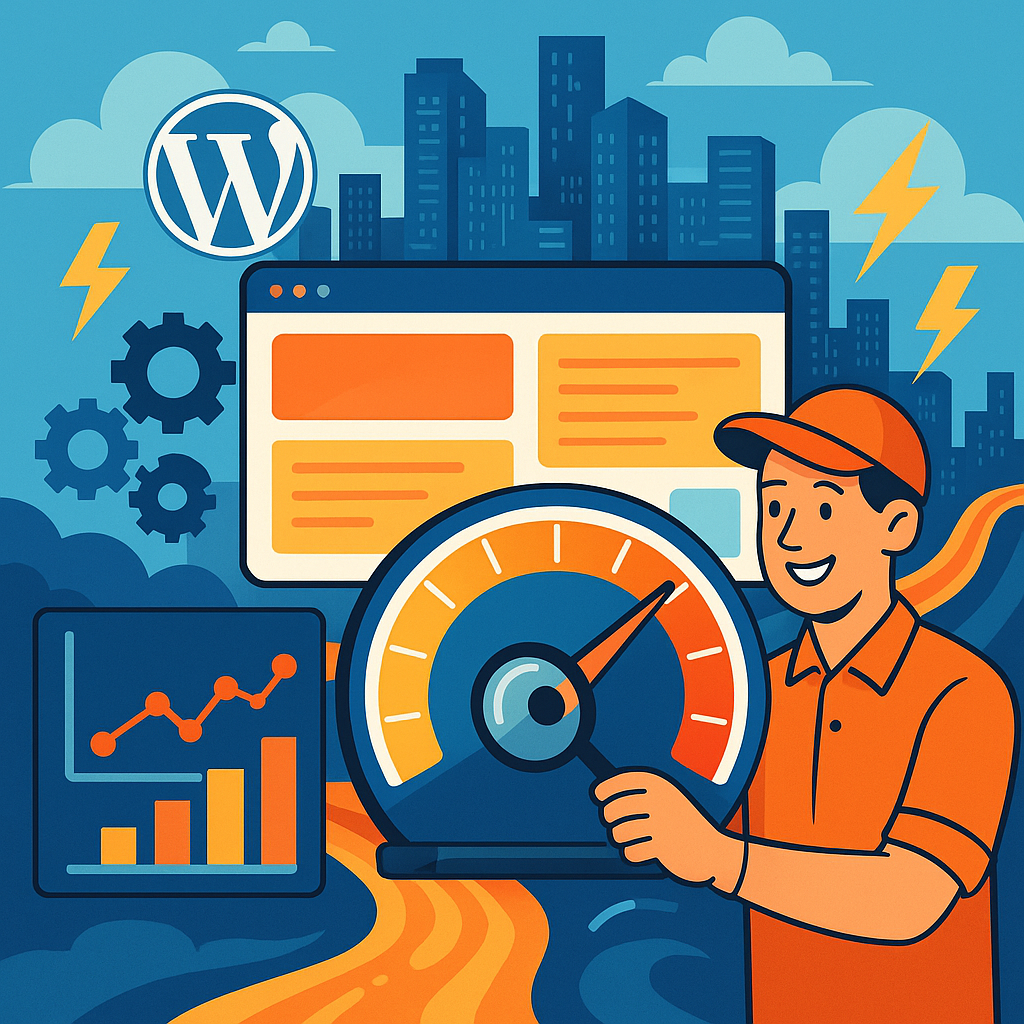Think about arriving at a gathering and waiting an awkward ten minutes for the host to respond at the door. It’s frustrating and can make you consider leaving. The same principle applies to a sluggish website. If your site is slow to load, it not only diminishes the user experience but also negatively impacts your search engine rankings. Just as we prefer a quick response at a door, Google favors websites that load swiftly.
It’s clear: a speedy website is essential, not merely an added bonus. This guide will explore how to assess and enhance the speed of your WordPress site.
How can you assess the speed of your WordPress website?
Fortunately, the WordPress ecosystem includes tools aimed at improving your website’s performance with each update. However, there is always potential for further enhancements. A website may load quickly on your device, but it might not be optimized for top-tier speed as you add content and plugins.
To accurately gauge your website’s speed, utilize a free tool such as a page speed test. By entering the URL of your page or post, you’ll find out how quickly it loads on both mobile and desktop devices.
The tool will provide a comprehensive analysis of your site’s speed, complete with a score out of 100. You will also receive details on the Core Web Vitals that influence this score:
- First Contentful Paint (FCP): Measures how long it takes for the first elements to appear on screen. Aim for an FCP score below 1.8 seconds.
- Largest Contentful Paint (LCP): Time taken for the largest piece of content to display. Aim for an LCP score below 2.5 seconds.
- Cumulative Layout Shift (CLS): Tracks movement on the screen during loading. Aim for a CLS score below 0.1.
- Time to First Byte (TTFB): How quickly your website begins loading when clicked. Aim for a TTFB below 800 milliseconds.
- Total Blocking Time (TBT): Duration for your website to become responsive when loading. Aim for a TBT score below 200 milliseconds.
The speed test provides not just a performance rating but also tailored suggestions for improving each score. By following recommendations specific to both mobile and desktop, you can significantly enhance your site’s performance.
Nine strategies for enhancing the speed of your WordPress website
WordPress offers a flexible foundation for building a website, but your site’s performance hinges on its configuration and management. Here are nine best practices to optimize your website’s speed:
1. Select a Quick Hosting Service
Your choice of web hosting greatly influences your website’s performance. No matter how well-designed your site is, a slow host can thwart its speed. Partner with a reputable hosting provider that focuses on delivering exceptional performance and outstanding customer support. Shared hosting plans may result in competition for resources with other sites, slowing yours down during peak times.
2. Use a Quality, Lightweight Theme
While themes personalize your site’s look, their design can also affect performance. Heavy themes with large graphics and numerous animations can slow your site. Review potential themes for load times on both desktop and mobile. A lightweight theme often leads to superior speed.
3. Optimize Your Images
Large images can significantly slow down your website. Utilizing compression tools before uploading can minimize their file size without sacrificing quality. Plugins can also be leveraged to optimize images after they are uploaded.
4. Be Selective with Plugins
Every plugin you add can slow your site. Use only what you need, regularly reviewing and deactivating any unnecessary plugins. Ensure the remaining plugins are actively maintained for optimal performance.
5. Regularly Clean Your Database and Media Library
As your site accumulates data over time, it can lead to bloat. Reducing unnecessary files such as outdated drafts and spams will help improve speed. Certain plugins can facilitate this cleanup process.
6. Employ a Content Delivery Network (CDN)
A CDN enhances your site’s load speed by distributing copies of its static content to servers worldwide. This allows content to be delivered from a server nearest to the visitor, which significantly cuts down load times.
7. Implement Caching
Caching retains a version of your site, which expedites loading times on repeat visits. Rather than rebuilding your pages from scratch each time, caching allows for quicker delivery of content.
8. Limit Third-Party Scripts
Scripts from third-party services can hinder performance. Limiting their use can lead to a more responsive site. Check your site for unnecessary third-party dependencies and streamline where possible.
9. Utilize Lazy Loading
Lazy loading significantly improves performance by loading images and videos only as users scroll down, rather than all at once upon page load. This method can substantially reduce initial loading times, particularly on content-heavy pages.
Every Second Matters
Through careful adjustments and adherence to best practices, you can transform your WordPress site into a speedy and reliable platform. Remember, optimizing site speed is not a one-time task, but an ongoing responsibility that becomes easier over time as your site evolves.
Enhance Your WordPress Speed Today
If you’re working on speed-related projects and need dependable WordPress development support, WordPressOngoing can help. We focus on building long-term partnerships by delivering high-quality work, fast solutions to issues, and consistently responsive communication—so your team can move forward with confidence.
